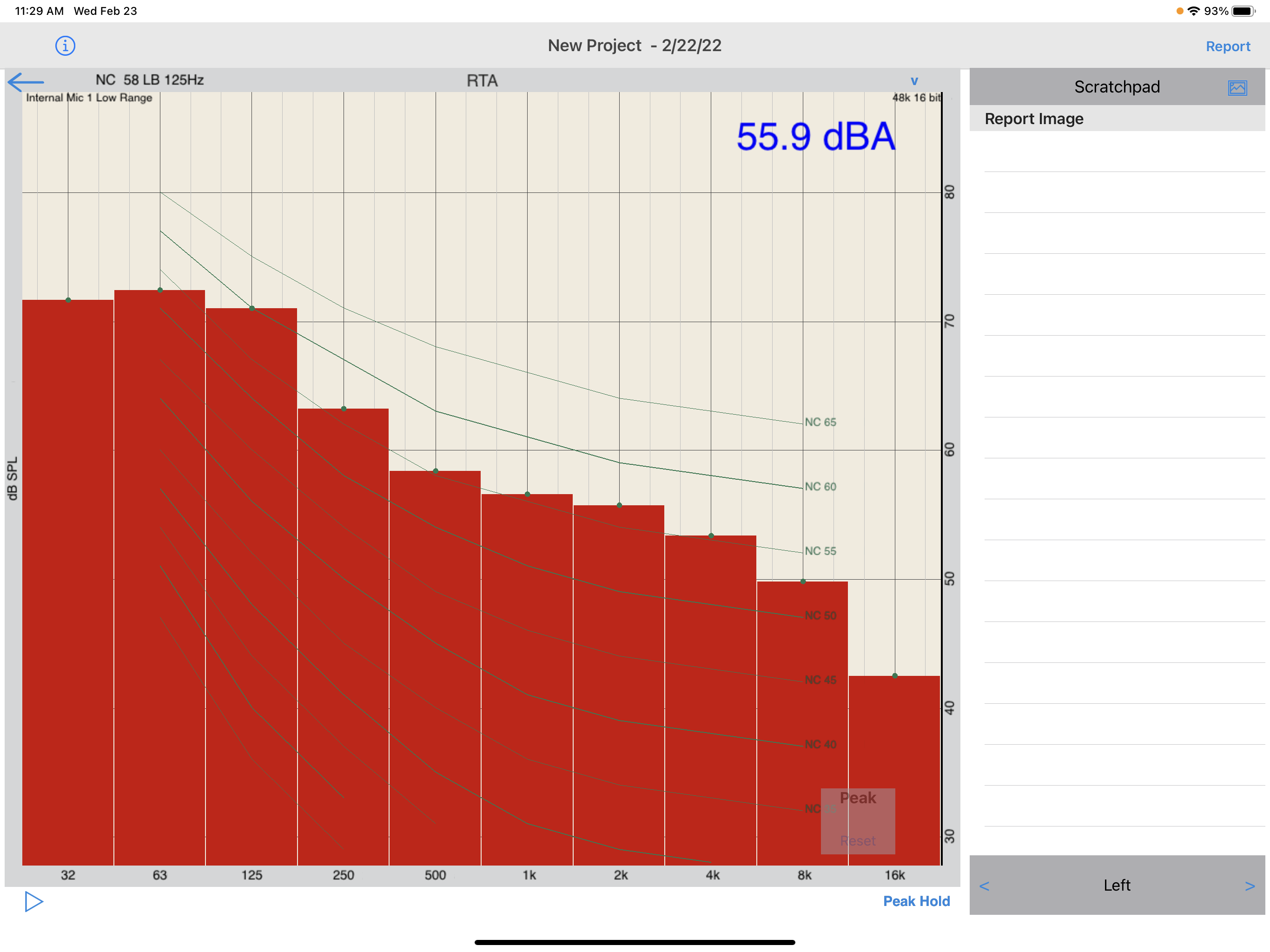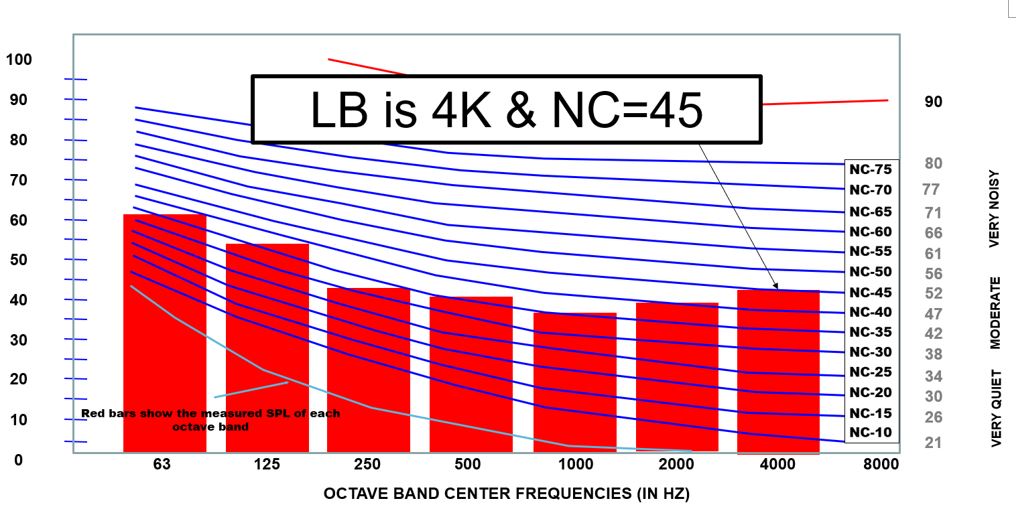
- Launching the Ambient Noise Test displays an RTA histogram plot showing the SPL of each octave.
- The Noise Criteria Balanced Curves are shown to indicate the "NCB" of each octave.
- The test should be conducted with all equipment on and the volume turned down on the AVR.
- Internal noise producers such as the HVAC system, rack fans, and projector should be on.
- Any unwanted noise from the speakers such as hum or hiss should be noted; perhaps there's a solution.
- External noise should be noted as well such as traffic noise and sounds from other rooms but this requires a more in depth solution.
- A good approach is to pause the test and make sure no one speaks or moves about. Then hit play to resume and finalize.
- You can insert a screen shot of this graph into the report.
- Finish by touching the return arrow in the top left. You'll see that the calculated NC (Noise Criteria) is inserted into the comments.
- Select "Completed" and add noteworthy comments if any.

Noise Criteria Balanced (NCB)
A somewhat recent development that has been widely accepted throughout the construction, factory, and noise control world is that of the Noise Criteria Balanced or NCB method of measuring noise levels. You'll see the NCB curves on the plot. The gist of NCB is that a sound at any frequency will be perceived as being the same level if it lies on the same curve. So, a 63 Hz sound that has an unfiltered SPL level of 60 dB, will be perceived as no louder than the same level as a 1000 Hz sound at 30 dB. That’s because they lay on the same NCB 25 curve; the curves show equal loudness to humans.
The typical employment of the NCB curve is to overlay the curves on an RTA measurement. For NCB calculation, we will ramp down the resolution to the old-fashioned single octave mode, since a different NCB is measured for each octave. Note that the NCB curves extend lower than the old NC curves and that's why they are the new CEDIA standard. You can select from many noise measurement standards with AudioTools but HAA uses NCB.
Limiting Band
A simple review of each octave bar shows the NCB curve it intersects. In this example (above) the 4K bar hits the NCB 45 curve. Out of all the octaves, this is the highest NCB curve intersection and thus it is ordained the limiting band and the rooms NCB is now characterized as NCB 45.
Chinese (simplified)


